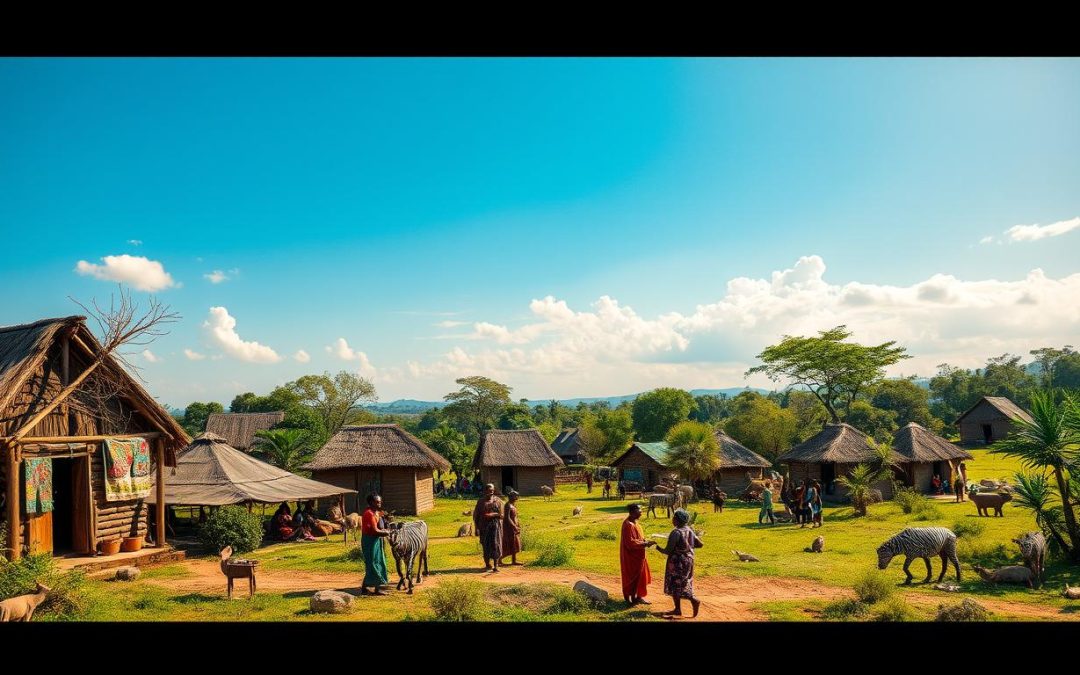Ever thought about how a small African nation can mix so many languages? The Central African Republic (CAR) is a great example. It shows how language can bring people together and show off a nation’s culture.
In the CAR, about 72 languages are spoken. French and Sango are official, blending old traditions with new influences.
Exploring the CAR’s language scene is like diving into a world of stories. It’s about how people stick together, adapt, and use language to connect. This nation is full of life and language.
Key Takeaways
- The Central African Republic hosts approximately 72 distinct languages
- French and Sango are the country’s official languages
- 92% of the population uses Sango as a primary communication mode
- Linguistic diversity reflects the country’s rich cultural heritage
- Language serves as a critical tool for national unity
Overview of Linguistic Diversity in CAR
The Central African Republic is a treasure trove of languages, showing its rich culture. Exploring the country’s languages, you see a mix of indigenous and colonial tongues. These languages shape how people talk and connect with each other.
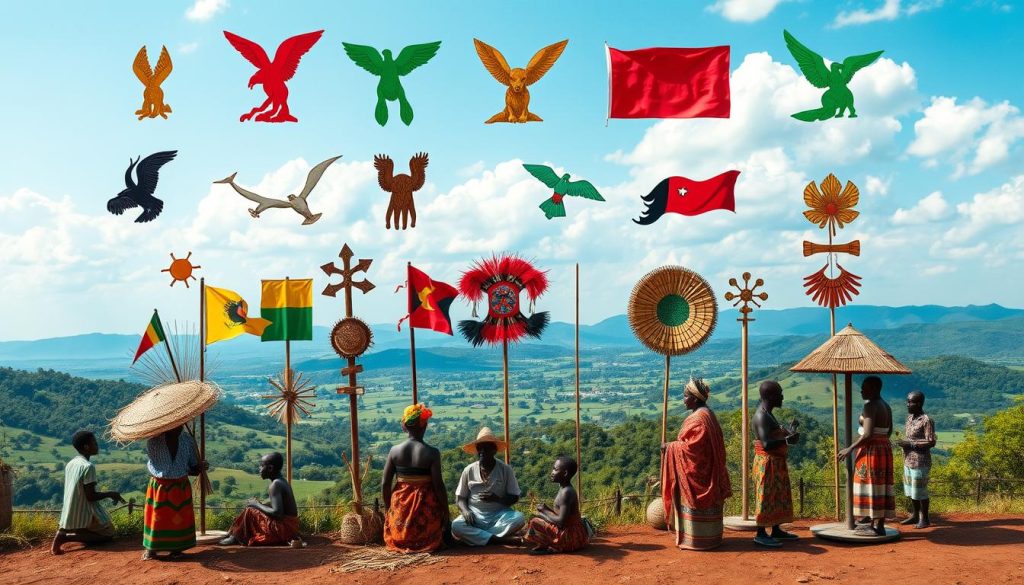
Current Language Demographics
The Central African Republic is known for its language variety. Almost all native languages belong to the Ubangian family. This makes the country’s language scene unique. People here speak many languages, with some key traits:
- Sango is spoken by nearly 90% of the population
- French remains an official language
- Indigenous languages represent significant cultural identities
Impact of Colonial History on Language Use
French colonial history has deeply influenced the country’s languages. The colonizers made French an official language. This has led to a multilingual society that keeps changing. French’s legacy is seen in education, government, and daily talks.
Distribution of Languages Across Regions
Language use changes from one region to another in the Central African Republic. The language scene includes:
- Ubangian languages dominate most areas
- Bantu languages are found in the extreme south
- Bongo-Bagirmi languages are in the northern parts
| Language Family | Geographic Region | Percentage of Speakers |
|---|---|---|
| Ubangian | Central and Eastern Regions | 70% |
| Bantu | Southern Regions | 15% |
| Bongo-Bagirmi | Northern Regions | 10% |
| Other Languages | Various Regions | 5% |
“Language is the roadmap of a culture. It tells you where its people come from and where they are going.” – Rita Mae Brown
Grasping the linguistic diversity shows the complexity and richness of the Central African Republic’s culture.
French as an Official Language
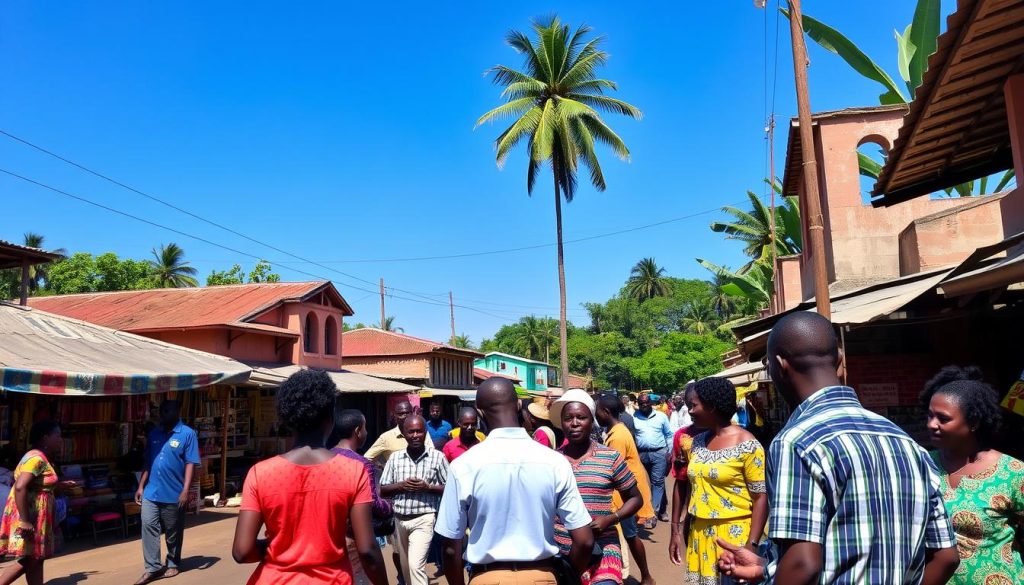
In the Central African Republic (CAR), French is very important. It is one of the two official languages. French is key in government, education, and official talks.
About 28.6% of people, or 1.4 million, speak French. This makes it a powerful language for many.
French has been in CAR since the colonial times. France set up systems that still affect how we talk today. This has made French a main language for:
- Government documents
- Legal talks
- Higher education
- Media
- Diplomatic talks
Even though not everyone speaks it, French is very important. It helps people from different groups talk to each other. This is because of the country’s many languages.
“Language is the roadmap of a culture. It tells you where its people come from and where they are going.” – Rita Mae Brown
But, there are still problems with using French more. Yet, it is a big part of CAR’s identity and how we communicate officially.
Sango: The National Lingua Franca
The Sango language is a key part of the Central African Republic. It’s more than just a way to talk. It started as a simple language but grew into a powerful tool that connects many people.
Evolution from Indigenous Language to Official Status
Sango began as a creole language, based on Ngbandi. By 1963, it became a national language. In 1991, it was recognized as an official language, along with French.
Current Usage and Speaker Statistics
- Native speakers: 620,000 (as of 2017)
- Second language speakers: 1.6 million
- Estimated population speaking Sango: 92% of Central African Republic residents
| Language Variety | Percentage of Usage |
|---|---|
| Urban “radio” variety | 80% |
| “Pastor” variety | 60% |
| “Functionary” variety | 40% |
Cultural Importance of Sango
Sango is a language that brings people together. It goes beyond ethnic groups, acting as a common language. This shows its importance in national identity and unity.
“Sango is not just a language, but the heartbeat of our national communication.” – Central African Linguist
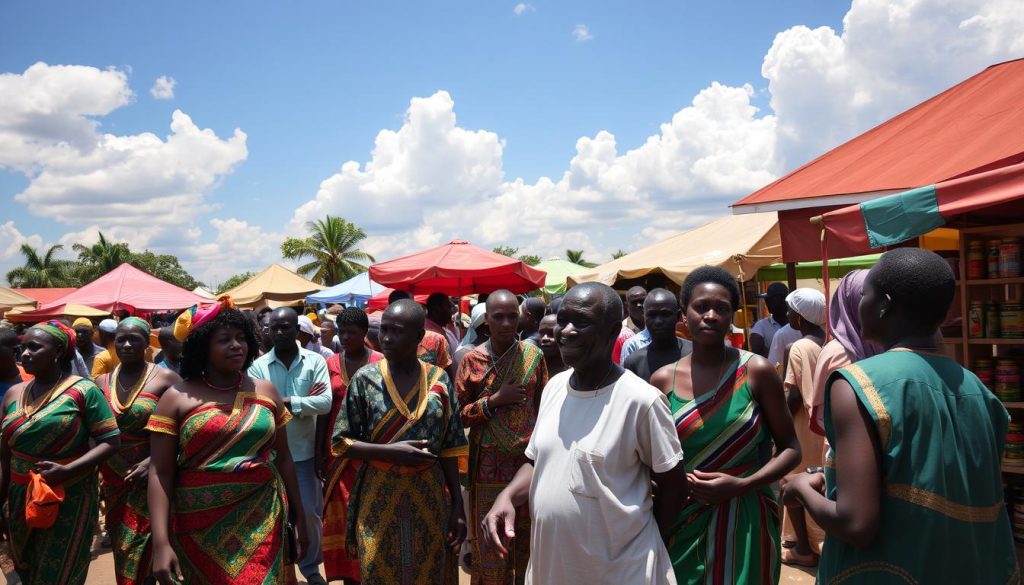
The language has seven oral and five nasal vowels. It has a complex structure with seven consonant-vowel syllables and three tones. Sango is a sophisticated way of communicating that keeps growing.
Indigenous Language Landscape
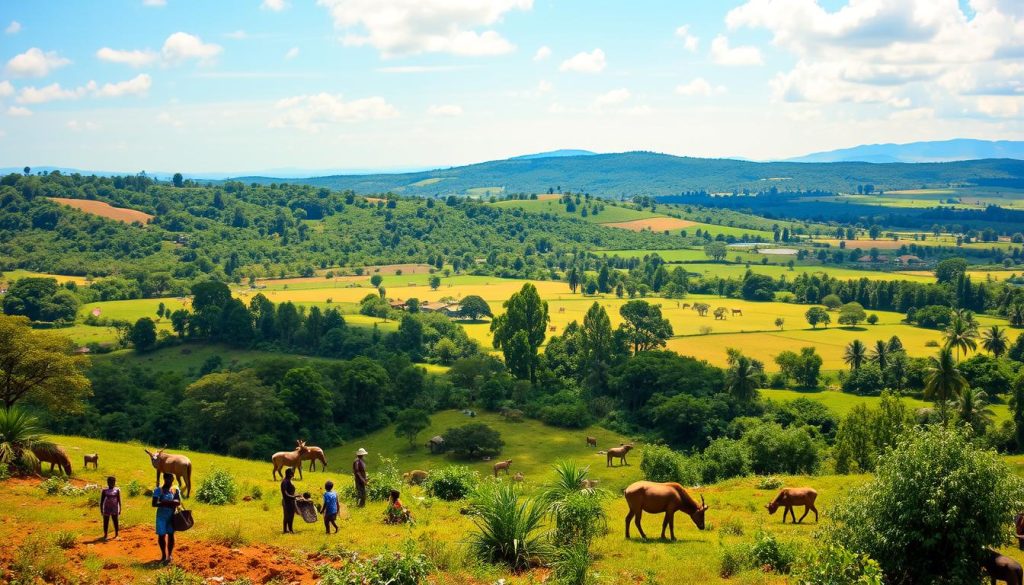
The Central African Republic (CAR) is a vibrant mix of languages. It has over 80 ethnic groups, showing the nation’s rich culture. Each group has its own way of speaking, making communication and culture rich and diverse.
The Ubangian languages are at the core of this mix. They belong to the Niger-Congo family. These languages are more than just a way to talk. They hold cultural identity and history.
- Predominant indigenous language groups include:
- Banda
- Sara
- Gbaya
- Mandjia
Every language in CAR is special. It shows the social life and traditions of its people. The languages mark the cultural heritage of different ethnic groups.
“Language is the roadmap of a culture. It tells you where its people come from and where they are going.” – Rita Mae Brown
Even though French and Sango are official, indigenous languages are key to keeping culture alive. Communities work hard to save their languages. They know language is a link to their past and traditions.
- Challenges facing indigenous languages:
- Globalization pressures
- Limited documentation
- Decreasing intergenerational transmission
Learning about CAR’s languages shows the nation’s complex culture. It highlights the people’s resilience and diversity.
Language Policies in the Central African Republic
Language policies in the Central African Republic are complex. They are shaped by history and culture. The nation aims to keep language diversity while uniting people.
Since gaining independence, the country’s language policies have changed a lot. They create a unique multilingual society. These policies balance French and Sango with support for local languages.
Language Policy Development
Important changes in language policies include:
- French and Sango are recognized as official languages
- There’s a push for more language inclusion
- Efforts to save indigenous languages
Modern Language Implementation
Putting language policies into action in schools is a big challenge. The government has worked on:
- Adding many languages to school programs
- Supporting bilingual education
- Creating language resources for all
Educational System Impact
Language policies greatly affect the Central African Republic’s schools. With a literacy rate of 50%, the government is finding ways to:
- Make education more accessible
- Boost language learning chances
- Use multilingual teaching methods
“Language is the roadmap of a culture. It tells you where its people come from and where they are going.” – Rita Mae Brown
These policies show the Central African Republic’s dedication to an inclusive, diverse education. It celebrates the nation’s rich cultural heritage.
Minority Languages and Their Communities
The Central African Republic (CAR) is a colorful mix of languages. Many minority languages live alongside the official ones. This shows the rich culture of the area.
In CAR, minority languages help keep local cultures alive. French and Sango are used for official talks. But, about 17 other languages add to the mix.
*Language is the road map of a culture. It tells you where its people come from and where they are going.* – Rita Mae Brown
Some important minority languages in CAR are:
- Chadian Arabic (63,000 speakers)
- Hausa (20,000 speakers)
- Lingala (10,700 speakers)
These languages face big challenges. Low literacy and few schools make it hard to keep them alive.
| Language | Speakers | Regional Distribution |
|---|---|---|
| Chadian Arabic | 63,000 | Northern regions |
| Hausa | 20,000 | Border regions |
| Lingala | 10,700 | Western areas |
Even with these hurdles, these languages are key to local identity. Efforts by the community to save these languages are crucial. They help keep CAR’s linguistic diversity alive.
Language Education and Literacy
Language education is key in the Central African Republic (CAR). The country struggles with low literacy rates and limited access to education. This is especially true in rural and hard-to-reach areas.
School System Language Policies
The education system in CAR faces big hurdles. There are high dropout rates:
- 39% of students drop out of primary school
- 47% of girls drop out compared to 31% of boys
- French is the main language taught
Adult Education Programs
The Global Partnership for Education (GPE) has started special programs for literacy:
| Program Metrics | Achievement |
|---|---|
| Students Benefiting | 99,000 across 480 public primary schools |
| Teacher Training | 801 teachers trained |
| School Management Training | 194 school managers trained |
Literacy Rates Across Languages
Language education in CAR is complex. About 3,000,000 people speak Sango, but it’s not widely used in schools. French is the main language for writing and school.
The challenge of language education is not just about teaching languages, but about creating pathways for understanding and opportunity.
Efforts to improve language education and literacy show CAR’s dedication to education. The community is working hard to overcome big challenges.
Impact of Multilingualism on Society
Multilingualism in the Central African Republic is a strong social force. It shapes cultural identity and how people communicate. With 71 living languages, the nation shows the beauty of linguistic diversity.
The impact of multilingualism goes beyond just talking. It brings different ethnic groups together. People switch languages easily every day.
“Language is the roadmap of a culture. It tells you where its people come from and where they are going.” – Rita Mae Brown
- Multilingualism enhances cognitive flexibility
- Promotes deeper cultural understanding
- Facilitates social interaction across diverse groups
- Strengthens national unity through linguistic diversity
Research shows interesting facts about the Central African Republic’s languages. On average, 59,028 people speak each language. This shows how languages weave together in society.
| Language Characteristic | Statistical Insight |
|---|---|
| Total Living Languages | 71 |
| Average Persons per Language | 59,028 |
| Linguistic Diversity Index | High |
In cities like Bangui, people use code-switching naturally. They mix languages, showing the rich culture in their words.
The multilingual nature of the Central African Republic shows language’s power. It brings people together, helps them understand each other, and expresses culture.
Conclusion
Exploring the Central African Republic’s languages has shown us a rich tapestry. This tapestry reflects the nation’s deep cultural heritage. The languages here are more than just a way to talk; they show identity, history, and social bonds.
Language policies in the Central African Republic are complex. They aim to keep local languages alive while also connecting to the world. French and Sango are key in uniting different groups. At the same time, local languages hold cultural knowledge and traditions.
Traveling through this linguistic landscape shows both challenges and chances. Each language has a story of survival and adaptation. The Central African Republic’s efforts to keep languages alive show how language can bring people together.
The future of languages in this area depends on education, cultural appreciation, and policies. These efforts should honor the rich language heritage while preparing for global interactions. The story of languages in the Central African Republic is ongoing and vibrant, showing the power of human communication and culture.
The above is subject to change.
Check back often to TRAVEL.COM for the latest travel tips and deals.
